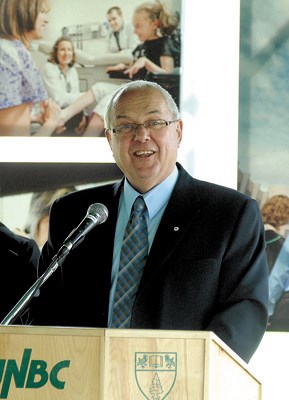 Combatants in B.C.’s education war zone will learn Wednesday whether the 10 per cent pay cut imposed on teachers by the employers is allowable under labour law.
Combatants in B.C.’s education war zone will learn Wednesday whether the 10 per cent pay cut imposed on teachers by the employers is allowable under labour law.
Something similar was attempted three years ago, but disallowed by the Labour Relations Board.
The difference between the two manoeuvres shows how much more aggressive tactics are this time around.
One of the moves the employers’ bargaining agency made in the last contract dispute in 2011 — the Winter of Blank Report Cards — was to demand that the B.C. Teachers’ Federation pay 15 per cent of teacher salaries to school districts.
That move followed a few months of low-grade job action by teachers, including the refusal to write report cards. In two previous disputes in 2005 and 2001, report cards (except Grade 12s) were not listed as an essential service, so were included in job action.
But the lack of reporting became a political issue in 2011 and the government fought to force teachers to issue them. Part of the fight was the demand for a 15 per cent salary payback from their union every month, on the premise that they weren’t doing all their work, so they shouldn’t get all their pay.
Then, as now, there was the familiar complaint from government that the union has more clout in contract disputes: “Teachers are able to apply pressure on the employer without any economic impact on them.” The employer said it made for an unbalanced fight and didn’t foster meaningful negotiations. It told the LRB that putting economic pressure on the BCTF and its members would restore balance to the bargaining dynamic.
The LRB rejected the demand, saying teachers were still showing up for work, they just weren’t writing report cards, as agreed under essential-service designations. It said there was no assertion that teachers were working only 85 per cent of the time while getting 100 per cent of their pay.
The employer asked for reconsideration and was rebuffed again by the LRB. The thrust of the ruling was that both sides devised the essential-services designations, so both sides had to live with them.
The employer noted some of the problems in allotting values to what teachers do, acknowledging it’s not about hours of work. They don’t work shifts, and aren’t paid an hourly wage. “Teachers are paid for completing their duties, not for working a set number of hours.”
The job action continued for months until a surprise deal was eventually reached with the help of mediator Charles Jago in June 2012.
Subsequently, the Supreme Court condemned the government’s bargaining tactics, including the 15 per cent gambit, saying it was secretly trying to provoke a full strike for its own political advantage.
This time around there are a couple of tactical variations, but the goal is the same — impose a cost on teachers. It’s a much more direct attempt this time — a straight 10 per cent salary deduction that’s already been imposed in some districts. An earlier effort to cancel health-insurance premiums and force the BCTF to pay them ($5 million a month) didn’t go anywhere.
Part of the rationale for the pay cut is the partial withdrawal of services by teachers.
That wasn’t accepted by the LRB in 2011. So to buttress the case for the cut, the government also late last month imposed the partial lockout. Teachers are barred from working in the classrooms at recess, lunch, 45 minutes before school and beyond 45 minutes after school.
That might make a stronger case for the pay cut. If they are completely barred from their work stations for a period of time, it’s easier for the employer to argue they’re not doing a full day’s work.
But it’s created the absurd situation for the past week where part of teachers’ days is spent engaging in job action and not doing some tasks, and part is spent locked out, physically unable to do other tasks.
The bigger absurdity is that both sides insist their tactics show how much they care about children and the education system, when obviously they’ve reached that point in the game where the main objective is just to hurt each other.
(Disclosure: My wife is a teacher.)



